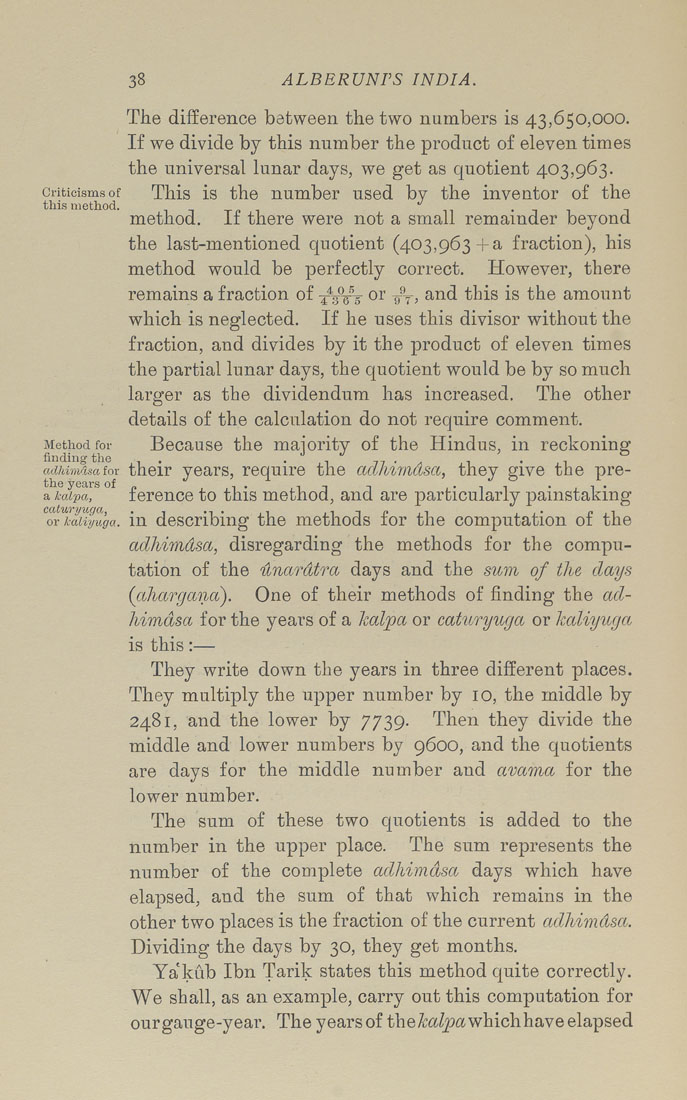38 ALBERUNTS INDIA.
The difference between the two numbers is 43,650,000.
If we divide by this number the product of eleven times
the universal lunar days, we get as quotient 403,963.
Criticisms of This is the number used by the inventor of the
this method. "^ .
method. It there were not a small remainder beyond
the last-mentioned quotient (403,963+a fraction), his
method would be perfectly correct. However, there
remains a fraction of ^Ws- or s/V, ^^^ t^i^ is the amount
which is neglected. If he uses this divisor without the
fraction, and divides by it the product of eleven times
the partial lunar days, the quotient would be by so much
larger as the dividendum has increased. The other
details of the calculation do not require comment.
Method for Becausc the majority of the Hindus, in reckoning
finding the , . • i 77 • /< i • 1
adhimdsa tor their ycars, require the adhimasa, they give the pre-
a kalpa, f ercncc to this method, and are particularly painstaking
or kaliyuga. ill describing the methods for the computation of the
ctdhimdsa, disregarding the methods for the compu¬
tation of the unctrdtra days and the sum of the days
(cthargana). One of their methods of finding the ad¬
himdsa for the years of a kalpa or caturyuga or kaliyuga
is this:—
They write down the years in three different places.
They multiply the upper number by lo, the middle by
2481, and the lower by 7739. Then they divide the
middle and lower numbers by 9600, and the quotients
are days for the middle number and avama for the
lower number.
The sum of these two quotients is added to the
number in the upper place. The sum represents the
number of the complete adhimdsa days which have
elapsed, and the sum of that which remains in the
other two places is the fraction of the current adhimdsa.
Dividing the days by 30, they get months.
Ya kub Ibn Tarik states this method quite correctly.
We shall, as an example, carry out this computation for
ourgauge-year. The years of theyfea/^a which have elapsed
|








